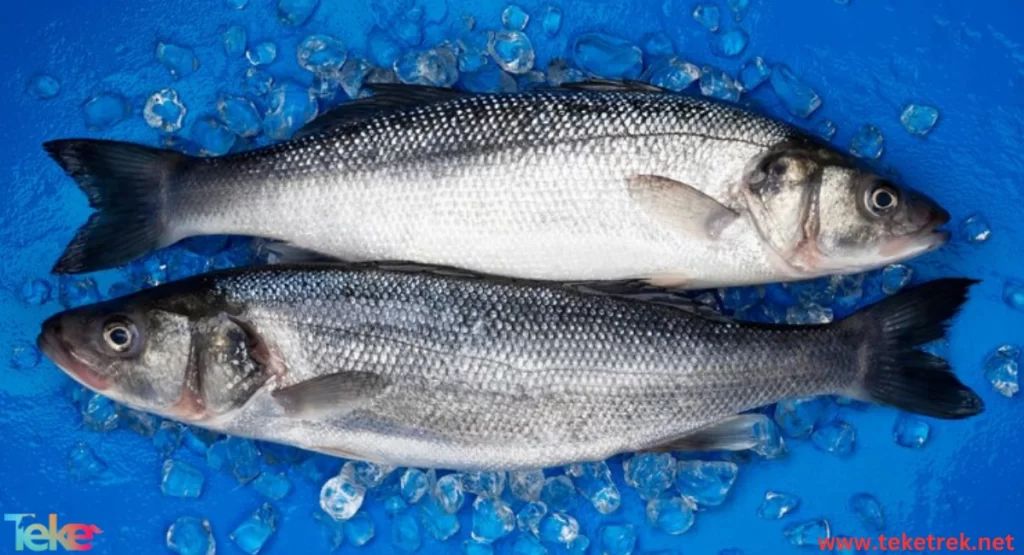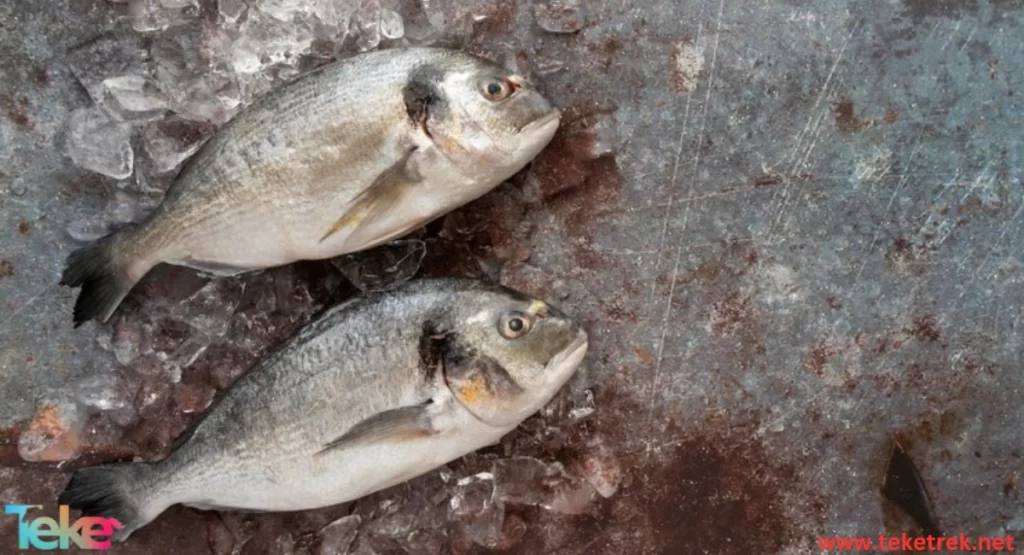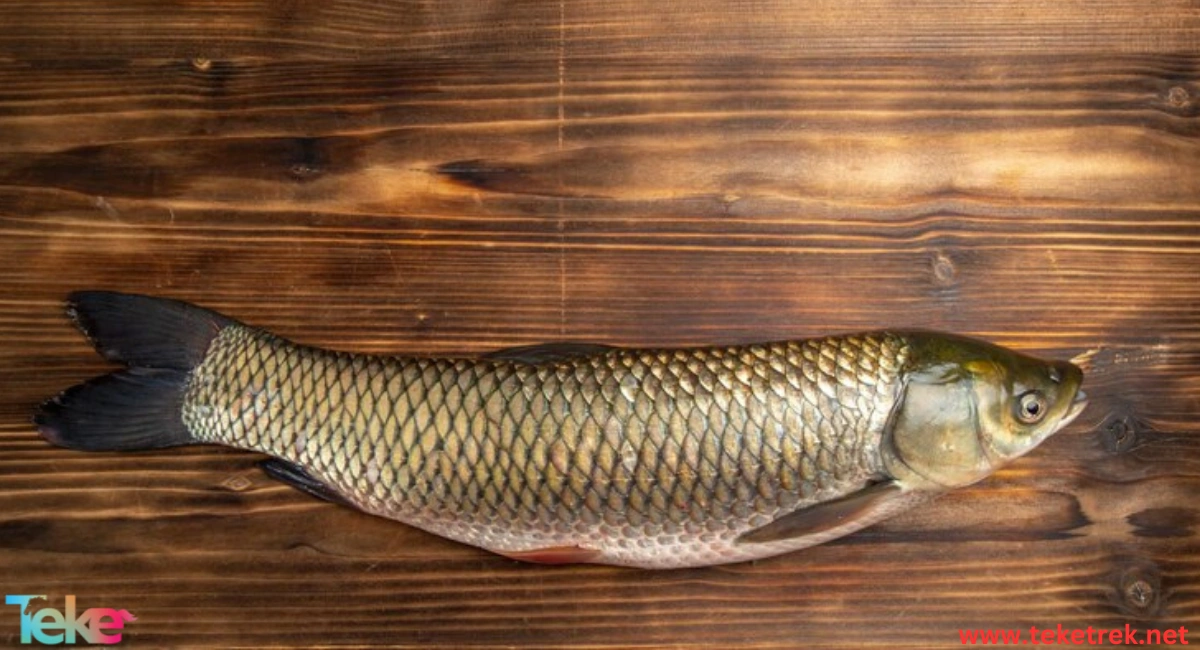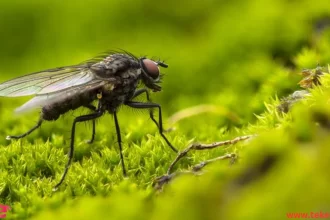Sea bass is one of the most famous types of fish with its unique shapes and colors. Below, on the Teke Trek website, we list its characteristics, features, and the most important information about it.
External Appearance of Sea Bass
- Sea bass classification is the family Serranida, come in a wide range of shapes, and each species has its unique characteristics. However, these fish are typically robust and full-bodied.
- A sea bass has a long dorsal fin, a wide and large mouth, a protruding lower jaw, several rows of sharp teeth, and small scales.
- Sea bass are particularly known for their colors, coming in many stunning patterns that serve as camouflage for both their prey and predators.
- The deeper the fish’s life, the more likely its color is to be redder.
- Sea bass species vary in size. Some species are very small, measuring only 1.5 inches, while others, like the giant grouper, can be nearly nine feet long and weigh 880 pounds.
- family SerranidaeOther types of sea bass include black sea bass, dwarf sea bass, rock sea bass, colorful comb, and yellowtail sea bass.
Habitats of Sea Bass
Sea bass are saltwater fish and can be found all over the world in tropical and temperate oceans and seas.
Their native habitats include the Atlantic coast, the Pacific coast, the Mediterranean Sea, and the Black Sea.
Many sea bass inhabit coral reefs, shelves, and rocky areas.
They can be found living at depths ranging from shallow to more than 656 feet in the ocean.


Behavior of Sea Bass
- Due to the large size of the sea bass family, their species vary greatly, not only in size but also in behavior.
- Sea bass are described as having natural fish behavior, and as active swimmers, they are known to ambush their prey by rushing at them at high speed.
- These fish also avoid predators using the same speed tactic.
- Although many sea bass live solitary lives and exhibit territorial behavior, some smaller species are not isolated and live in large schools.
- Sea bass like to hide in caves and coral reefs and can be found hiding in their environment.
- It has been observed that sea bass in captivity play with water bubbles and even yawn.
Diet of Sea Bass
- All sea bass are carnivorous, and what they eat depends on their species and size.
- Large sea bass species feed on fish, mollusks, worms, and crustaceans, while smaller species mostly feed on plankton.
- These fish are largely opportunistic feeders, with some larger sea bass species even eating smaller ones.
- Sea bass are known to sneak in their environment and ambush their prey from hiding places.
- Their radiant color patterns serve as disruptive camouflage and give them an advantage over their prey.
- The quality of the sea bass’s diet plays a significant role in the overall vibrancy of their colors.
- The better their diet, the brighter their colors. A pale sea bass may indicate malnutrition.
Predators and Threats to Sea Bass
Sea bass are prey for larger predatory fish.
These predators include summer flounder, monkfish, spiny dogfish, large sharks, as well as crocodiles, otters, and dark sharks.
Even some larger sea bass species prey on smaller ones.
Sea bass also face environmental and human threats, such as climate change, invasive species, bad weather conditions, pollution, and overfishing.
Reproductive Stages of Sea Bass
- Sea bass are largely hermaphroditic.
- Some species are synchronous hermaphrodites, meaning the organism has both male and female reproductive organs at the same time and can self-fertilize its eggs.
- Other species are protogynous hermaphrodites, meaning they start as females first and then later transform into males.
- A female sea bass produces vast amounts of eggs and lets them drift wherever the ocean takes them.
- The number of eggs laid depends on the species, with some laying up to 300,000-500,000 eggs.
- When the eggs eventually hatch, the larvae are noted to have a planktonic nature.
- The average lifespan of sea bass varies by species.
- The average life expectancy of black sea bass is from 9 to 12 years, while the colorful comb can live up to 16 years. Some types live more than 20 years.
Some Facts About Sea Bass
- Sea bass come in a wide range of sizes, starting from 1.5 inches in length to eight feet and ten inches.
- They can also weigh up to 880 pounds.
- Sea bass is a food fish, described as having a delicious taste, firm and tender texture, and flaking into small pieces when broken.
- It is mostly consumed in Asian countries like China.
- These fish are usually cooked steamed, grilled, boiled, roasted, and fried.
- Many types of sea bass are known for their colorful patterns, and their skin is used for decoration even in food preparation.
Frequently Asked Questions About Sea Bass
- Where can sea bass be found?
Sea bass live in the Mediterranean Sea and the northeast Atlantic, from Norway to Morocco. They are mainly found above sandy or rocky bottoms of the coastline between the surface and a depth of about 30 meters.
- How can sea bass be identified?
Sea bass typically range in length from 70 to 80 cm on average.
- Are sea bass marine or river fish?
Sea bass are marine fish and live in salt water such as seas and oceans, but there is a type of sea bass that lives in the river.
What are the benefits of sea bass?
It has health benefits: sea bass is an ideal nutritional solution for many health problems and improving the quality of life. The balance of fatty acids in sea bass, especially omega 3, contributes to lowering harmful cholesterol levels in the blood, thus reducing the risk of cardiovascular disease.
- Is sea bass a good fish to eat?
Eating sea bass is considered safe for health, but some species, such as black sea bass and striped sea bass, contain amounts of mercury, which means that it is recommended to eat 6 servings or less of these species per month.
- What kind of fish is seabass?
It is a small fish native to the western Atlantic Ocean.
- What’s another name for sea bass?
sea bass knowed hamlet, cony, grouper, hind, and jewfish.


In conclusion, sea bass are among the most delicious types of fish and are used in both commercial and recreational fishing. They are used in traditional cooking around the world. Black sea bass is widely used in Asian cuisine such as Thai, Korean, Indian, and Chinese dishes, as well as Mediterranean, Turkish, Greek, Egyptian, and French dishes. Sea bass can also be grilled, fried, or baked.






